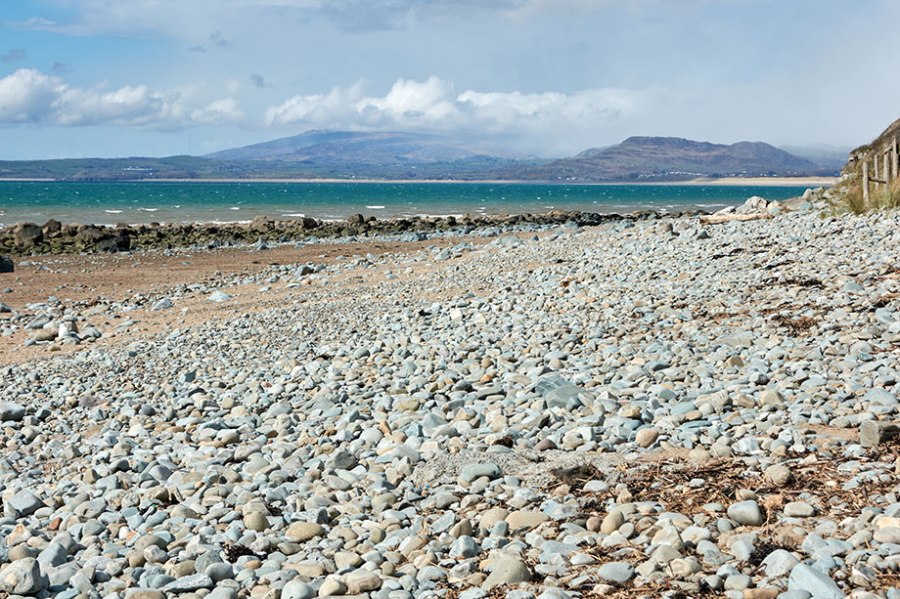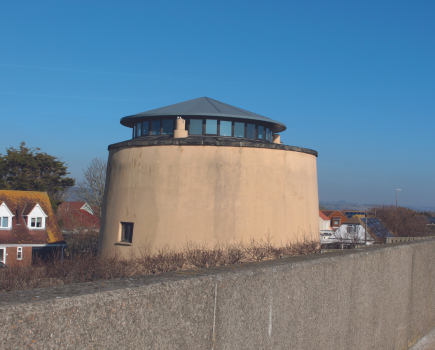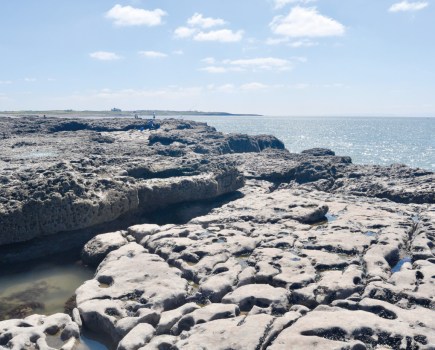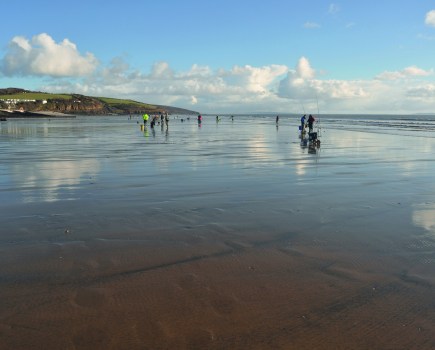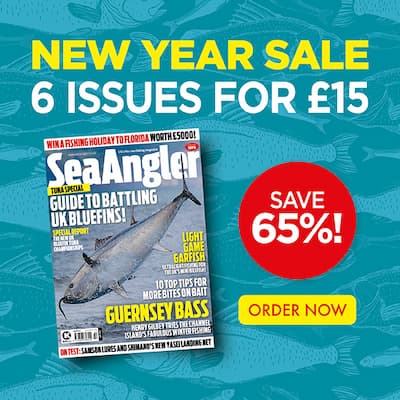Popular with summer tourists, this mark facing the Llŷn Peninsula has much to offer all year
Words & Photography by Mike Thrussell
Famous for its 13th century medieval church situated 20 metres above the high tide mark among the sand dunes. Llandanwg beach is a popular summer tourist venue between May and September, but can often be deserted except for dog walkers from late September to April.
It offers sweeping views west along the Llŷn Peninsula and is popular out of season with anglers seeking solitude.
SEASONAL SPECIES
Although the bass are resident all year, it’s April before the season really gets going with May and June good months when fishing with baits among the rougher ground to the north side, and again in September to November.
The clean sand to the south side offers flounders, dogfish, occasional thornback and small turbot. A few small smoothhounds are caught among the rocks in June and July, though their presence is very unpredictable. At night, expect an occasional bull huss too.
Winter produces plenty of school bass, with whiting showing from September to February with the larger numbers present during bigger spring tides. The sand produces flounders close in and some decent dabs at longer range. Dogfish are most abundant just after a blow has passed through when the sea is settling. Huss can appear later in the year as they move near the beach off the nearby rough ground areas at night.
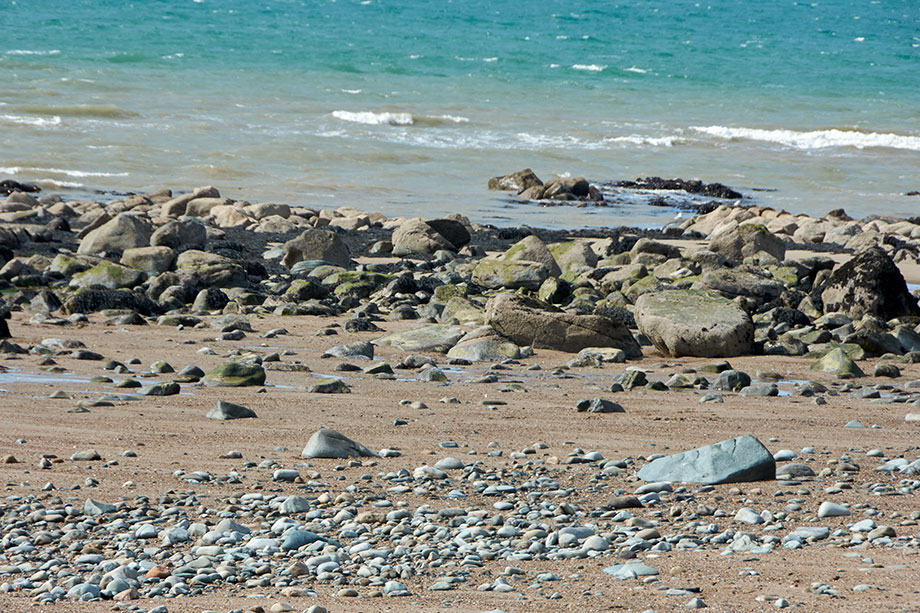
Llandanwg Beach – fish the rough ground for bass
TACTICS
An 11ft bass rod with either a 6500-sized multiplier loaded with 20lb mono, or a 5000-sized fixed-spool reel loaded with 30lb braid is an ideal combination for dropping crab baits at short range into the rough ground for the bass. From low water for the first three hours of the flood is the best time, with the bigger tides always favourite. Night tides are more consistent than daylight tides.
Those fishing plugs over the rough ground can do well with surface poppers and shallow divers, though losses will put some off. Ideal conditions for this is a light onshore wind that just cuts up the surf a little with a cloudy sky because the water can be clear at times. An 8-9ft plugging rod with a size 4000 fixed spool and 20lb braid with a short fluorocarbon leader is ideal for this.
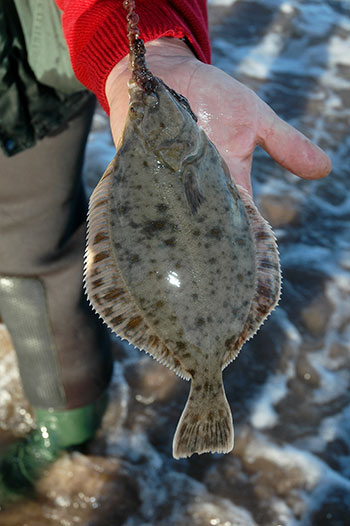
Flounder
Off the sand and for longer range, switch to a 12-15ft beachcaster, rated four to six ounces, fished with either a multiplier and 18lb line or a fixed spool with 20-30lb braid. Add a 60lb shockleader for casting safety. This picks up any rays in summer, and the winter dabs, dogfish and whiting with night tides best. Cast no more than 30 yards for the winter flounders and turbot.
A simple sliding paternoster with a short nine-inch hooklength ending in a size 3/0 Viking pattern hook is perfect when fishing a crab bait in the rough ground.
FURTHER TACTICS
For the rays and the huss, fish a pulley rig with a size 4/0 Viking hook. For general species over the sand, a two-hook loop rig fishes well with size 2 Kamasan B940 Aberdeens. For the flounders and turbot, switch to a three-hook flapper and size 2 to 4 Aberdeens.
Fluorocarbon hooklengths can make a big difference here if the water is clear.
Top bait for the bass and the smoothhound is a peeler crab, but it can be hard to get locally. Mackerel, sandeels and squid take the rays and huss, with worm baits picking up the dabs and flounders. The turbot fall to either mackerel strips or small fillets of sandeel. If you happen to have a few fresh razorfish in the period either side of Christmas and New Year, these can pick out the bigger flounders, especially in a settling sea.
NEED TO KNOW
Getting there
Access is off the main A470 on to the A496 Barmouth to Harlech road. Just south of Harlech turn west for Llandanwg, which is signposted. Follow the signs to a small car park with a pay meter. Access to the beach is through the sand dunes on a marked path.
Tackle shop
Barmouth Angling, 1 Ael-y-Don, Church Street, Barmouth, LL42 1EW, tel: 07570 559304.
Viking Fishing, High Street, Barmouth, tel: 01341 281821.

